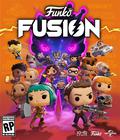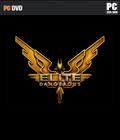Elite: Dangerous officially launches on Dec. 16, but when we got word that creator David Braben was coming to San Francisco to demo the game with a proper flight stick setup and an Oculus Rift DK2, I had to take one last sneak peek. As someone who grew up on computer space flight sims, not the least of which was the LucasArts classic X-Wing, the idea of playing Elite: Dangerous with a VR headset was enticing. The biggest question in my mind before diving in was, "Would it live up to expectations?"
After sitting down at the computer, I got a quick run-through on the controls from Frontier's community manager. Everything was as expected, with flight controls, thrusters, weapons and throttle all mapped in a configuration that should feel standard to any fan of the genre. With that out of the way, it was time to strap on the DK2 and get to work.
The first thing I noticed was the level of detail that went into the cockpit. Rather than simply render the basics, Frontier appears to have covered all the bases. When I looked down, I could see virtual legs. My left hand was on the throttle, and my right hand was on the joystick to the right. As I moved the throttle in real life, I saw it move in real time within the VR world. Even button presses on the throttle and joystick were replicated, albeit with a slight delay.
Once the initial bit of "This is cool" passed, it was time to try one of the demo missions. The community manager started me with a basic tracking scenario that had me target and shoot down an enemy fighter. It took a few minutes to get used to the "newness" of everything, but once I relaxed, it all just sort of clicked.
With the DK2 on my head, flying the fighter within Elite: Dangerous didn't feel like controlling a video game. I wasn't thinking about moving a joystick or pressing a button on the throttle to activate the thrusters; I was just flying a ship in outer space. One of the training missions occurred near an asteroid field, so I took a short detour to marvel at the maneuverability of the ship and see how close I could get to the surface of one of the monster-sized rocks.
After three training missions, I asked if they could load up a more advanced scenario, with AI fighters that were also armed and would fire back. Surprisingly, I was told that all of the enemy ships were armed; it was just that in the one-on-one scenarios, I was staying behind them and not giving them a clean shot. To increase the challenge, I was given a mission to destroy a larger ship that was being escorted by three enemy fighters. To assist, I had wingmen at my side. If playing with the DK2 was impressive before, flying around with it in proper combat was the "holy shit" moment of the afternoon.
The best way to describe the feeling would be to mention some of the dogfighting scenes in the re-imagined "Battlestar Galactica" TV series. Arcing my way through space while firing on an enemy fighter, only to fire the thrusters and flip a 180, I felt like Starbuck in her Viper. Part of that was the level of control offered by the flight stick setup, but the majority of it was due to using the DK2. I wasn't looking at a screen to track the other fighters; I was looking out the window of my cockpit, left, right and up. Instrument readouts didn't feel like part of the UI; instead, I had started to think of them as actual panels inside my fighter.
Honestly, the only point at which the immersion broke was when I tried to read some of the smaller text on the weapons display. Given the resolution of the DK2, the small bits of text could appear fuzzy and were a harsh reminder that it was all just a game. On a system with a higher resolution display, it would be very easy to get lost inside it all.
I only got to play Elite: Dangerous with the Oculus Rift for about an hour, but it was easily the most impressive use of the technology that I've seen to date. There are some amazing proof-of-concept programs for the Rift, but Elite: Dangerous isn't just a proof of concept. It is a fully working simulation that brings together a number of moving parts with the result being just short of magic. Perhaps the most amazing thing is that, according to Braben, Frontier implemented Rift support not as part of any marketing plan, but simply because backers on their forums requested it. Initial support took five days to complete, from concept to working code.
For more details on Elite: Dangerous, be sure to check out our full preview of the game.
More articles about Elite Dangerous











 In Elite Dangerous is a space simulation game where you take a ship and 100 credits to make money legally or illegally - trade, bounty-hunt, pirate, assassinate your way across the galaxy.
In Elite Dangerous is a space simulation game where you take a ship and 100 credits to make money legally or illegally - trade, bounty-hunt, pirate, assassinate your way across the galaxy.


























